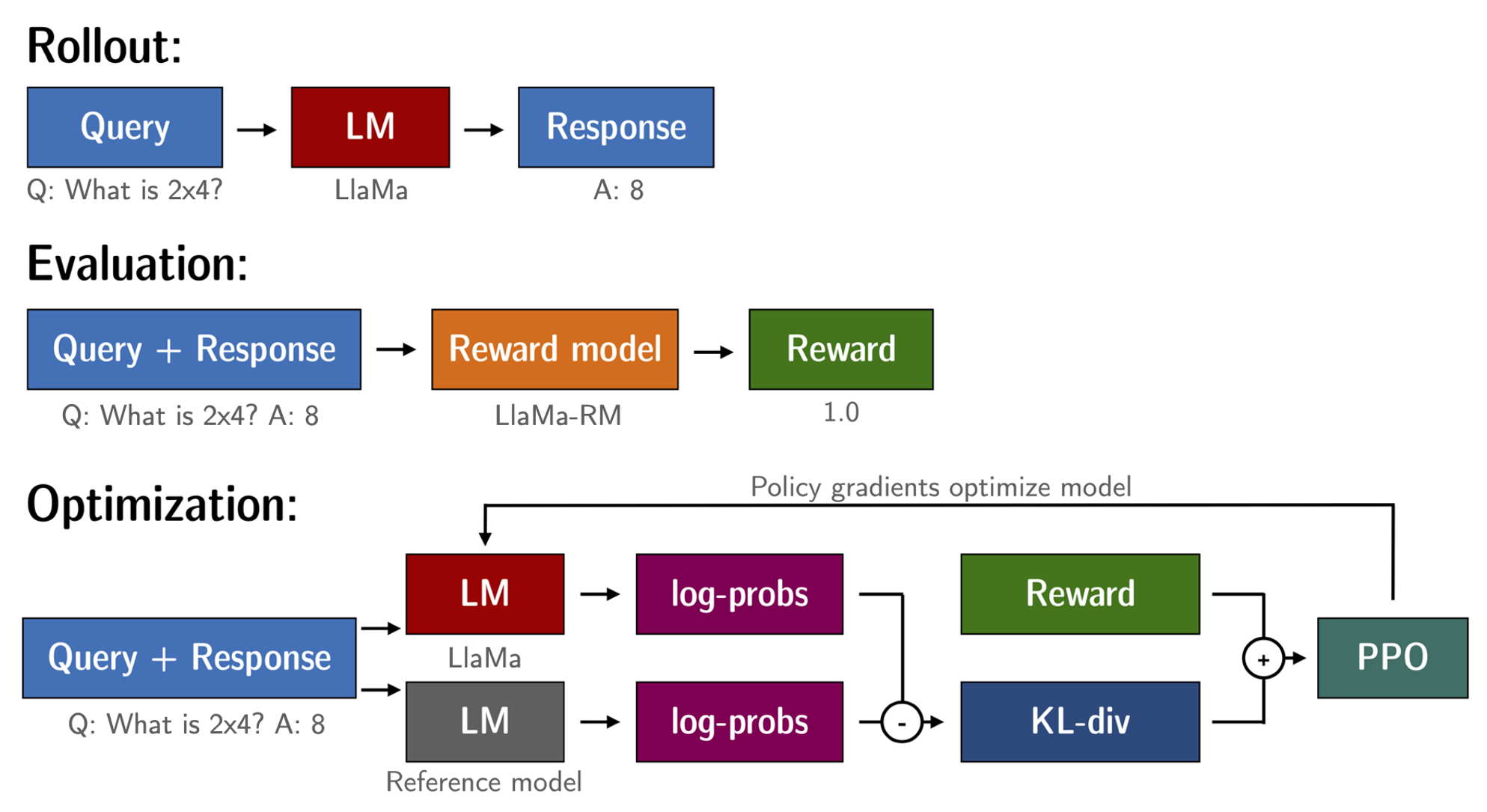File size: 2,017 Bytes
c5f1384 ce80594 4dad3de aeebea1 |
1 2 3 4 5 6 7 8 9 10 11 12 13 14 15 16 17 18 19 20 21 22 23 24 25 26 27 28 29 30 31 32 33 34 35 36 37 |
# RLHF (Reinforcement Learning from Human Feedback)流程
1. 首先采用监督学习的方式,使用人工标注的数据在预训练语言模型的基础上进行微调,得到一个初步的语言模型。
2. 然后收集人工反馈的数据,这些数据包含人工生成的文本及人工给出的评分。利用这些带评分的数据训练一个reward模型。
3. 最后,利用reward模型产生的奖励信号,采用强化学习的方式对第1步得到的语言模型进行优化。在这个步骤中,会生成大量文本,并采用reward模型给出的奖励进行更新。
所以整体流程分为监督微调、训练reward模型和强化学习三个阶段。首先利用有限的人工标注数据得到一个初步模型,然后利用更多的人工反馈文本训练reward模型,最后利用强化学习和reward模型的反馈不断优化和提高语言模型。

**Usage**
# 环境配置
git clone https://github.com/hiyouga/ChatGLM-Efficient-Tuning.git
conda create -n chatglm_etuning python=3.10
conda activate chatglm_etuning
cd ChatGLM-Efficient-Tuning
pip install -r requirements.txt
# 终端输入
CUDA_VISIBLE_DEVICES=0 python src/infer.py \
--checkpoint_dir path_to_checkpoint # repo files
# PPO训练,创建文件夹path_to_rm_checkpoint,将此repo的文件存入其中,运行下列命令,3090预估50小时
CUDA_VISIBLE_DEVICES=0 python src/train_ppo.py \
--do_train \
--dataset alpaca_gpt4_en \
--finetuning_type lora \
--reward_model path_to_rm_checkpoint \
--output_dir path_to_ppo_checkpoint \
--per_device_train_batch_size 4 \
--gradient_accumulation_steps 4 \
--lr_scheduler_type cosine \
--logging_steps 10 \
--save_steps 1000 \
--learning_rate 5e-5 \
--num_train_epochs 1.0 \
--fp16
# https://chatglm.cn/login_v2?md5=Y2t6Vk81QXFCV09FeE1xQTVSVVM4dz09 |